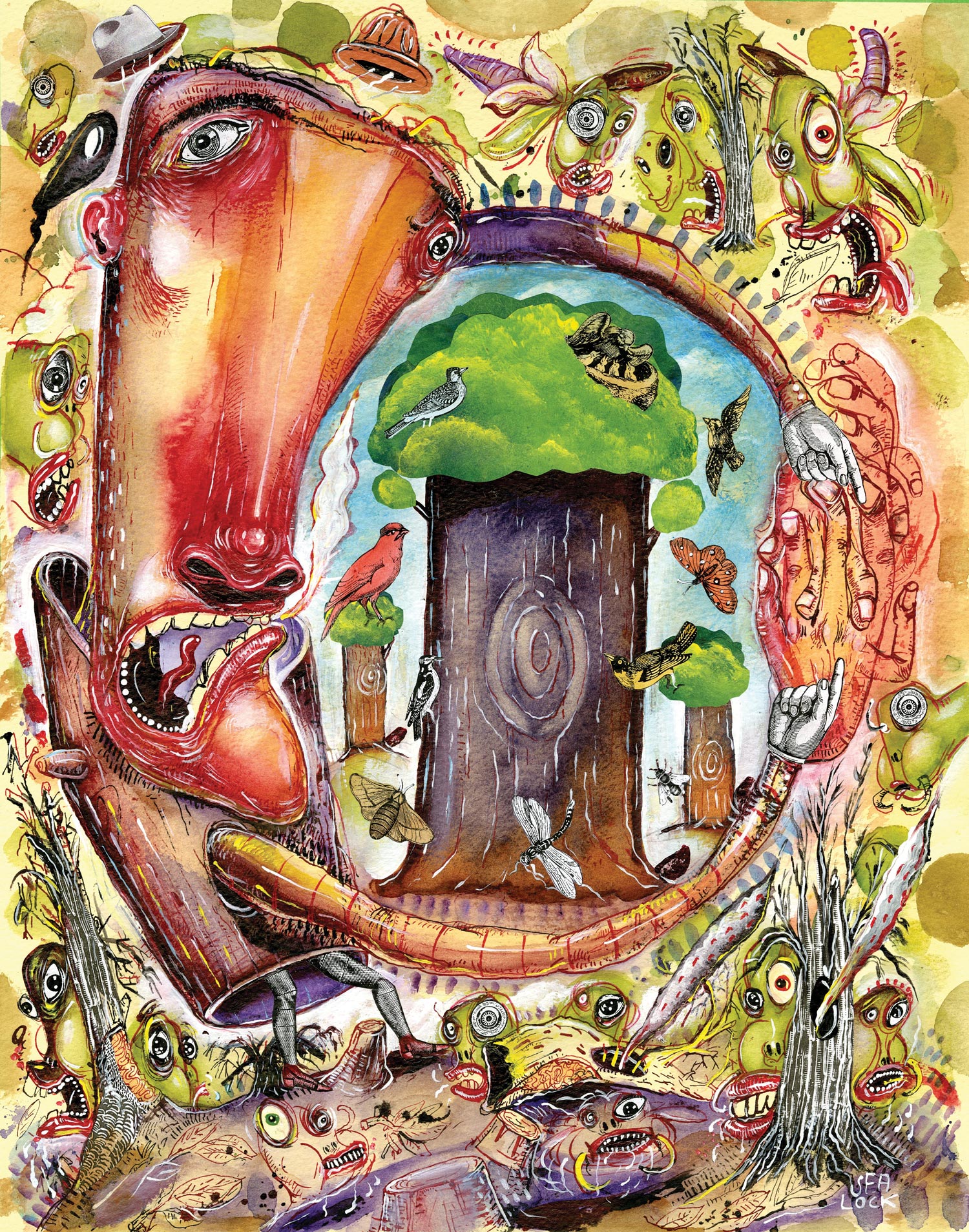
![]() illustration rick sealock
illustration rick sealock

THE ATC and Partners Work to Protect Ash Trees from the Destructive Emerald Ash Borer
 silent and destructive killer is lurking in eastern forests, including along the Appalachian Trail corridor. Its damage threatens to significantly change the forest composition on many parts of the Trail — as well as approximately 60 percent of the continental U.S., where ash trees (trees in the Fraxinus genus) range. The culprit is the emerald ash borer (EAB, Agrilus planipennis), an invasive exotic insect from Asia that made its way to the United States through infested solid wood packing material sometime around the middle 1990s in Michigan. EAB larvae kill ash trees by creating serpentine feeding galleries beneath the bark of the trees, disrupting the flow of nutrients and water. This effectively girdles and kills the tree. EAB infested ash trees lose most of their canopy within two years of infestation and die within three to four years.
silent and destructive killer is lurking in eastern forests, including along the Appalachian Trail corridor. Its damage threatens to significantly change the forest composition on many parts of the Trail — as well as approximately 60 percent of the continental U.S., where ash trees (trees in the Fraxinus genus) range. The culprit is the emerald ash borer (EAB, Agrilus planipennis), an invasive exotic insect from Asia that made its way to the United States through infested solid wood packing material sometime around the middle 1990s in Michigan. EAB larvae kill ash trees by creating serpentine feeding galleries beneath the bark of the trees, disrupting the flow of nutrients and water. This effectively girdles and kills the tree. EAB infested ash trees lose most of their canopy within two years of infestation and die within three to four years.
According to U.S. Forest Service Forest Inventory and Analysis data, ash trees comprise three to five percent of the southeastern forest composition, including many parts of the Trail. That means the forest won’t just look different in affected areas, but the ecosystem will be permanently altered as ash trees die. According to Dan Herms of the Ohio State University Department of Entomology, 282 species of arthropods interact with ash trees, 44 of which rely on ash trees exclusively. The loss of ash trees will most certainly have a negative impact on forest biodiversity. “Some people ask, ‘What’s the problem? It’s just one species gone,’” says Marian Orlousky, the Appalachian Trail Conservancy’s (ATC) northern resource management coordinator. According to the National Wildlife Federation, “Insects, particularly the larval caterpillars of moths and butterflies, are a primary means of moving energy from plants to animals. They act as critical links in many food webs, and as adults, provide the important service of pollination. When ash, a group of species that intimately supports so many other species, is lost, the entire system can collapse. While the physical gaps left in the environment will likely be replaced, the functional gaps may not. Invasive exotic plant species often invade disturbed habitats and replace natives as they are lost or removed. Because the novel invasive plants have not co-evolved with the native insects in a given ecosystem, they do not provide the same level of functional support, especially for those insects that are specialists.” “With the loss of ash trees, the cascade effect on the associated ecosystems may never be fully realized,” says Matt Drury, resource management coordinator for the ATC’s Southern Region. “The world becomes a little less intriguing with the loss of each species.” Currently, the EAB is in Georgia, North Carolina, Tennessee, Virginia, West Virginia, Maryland, Pennsylvania, New Jersey, New York, Connecticut, Massachusetts, and New Hampshire, not to mention nearly 20 additional states not along the A.T. corridor. That leaves just Vermont and Maine uninfested. But those numbers could change quickly, as the EAB can move up to 10 to 15 miles per year and there are disjunct occurrences from people moving firewood, according to Drury. “The hardest hit areas along the Appalachian Trail corridor are areas at higher elevations, between 3,000 and 4,200 feet, which are ideal sites for a white ash ecosystem,” explains Paul Merten, entomologist with the U.S. Forest Service Forest Health Protection program for the southern region. There’s little hope for ash tree survival in affected areas. A study in Michigan found trees with EAB infestation experienced a 99.7 percent mortality rate, according to Drury. Unlike many other trees infested with invasive pests — such as hemlocks infested with the hemlock woolly adelgid that can continue to survive for four to 10-plus years — the EAB kills ash trees much more quickly. “Because of its history and how efficient of a killer it is, there is a possibility that there will be no more ash trees in 10 years,” says Josh Kelly, public lands biologist for MountainTrue, a North Carolina-based environmental organization that works to champion clean water, resilient forest, and healthy communities. The EAB also doesn’t discriminate when it comes to the ash trees it destroys, it kills all species in the Fraxinus genus as well as white fringe trees (Chionanthus virginicus). The only trees it doesn’t destroy are young ones smaller than the size of a pinky finger. Once they become more mature, they are subject to the EAB’s destructive path. The future may be grim for ash trees, but the ATC, U.S. Forest Service, and regional conservation groups such as MountainTrue are working to strategically protect as many trees as is plausible. The EAB and other bark beetles are particularly challenging flying insects to control, according to Merten. “Bark beetles are troublesome to control [because] they are inherently cryptic,” Merten says. “Bark beetles live under the bark most of their lives so you don’t see them. Most of the mechanical or silvicultural methods we’ve tried to employ have not been very successful.”

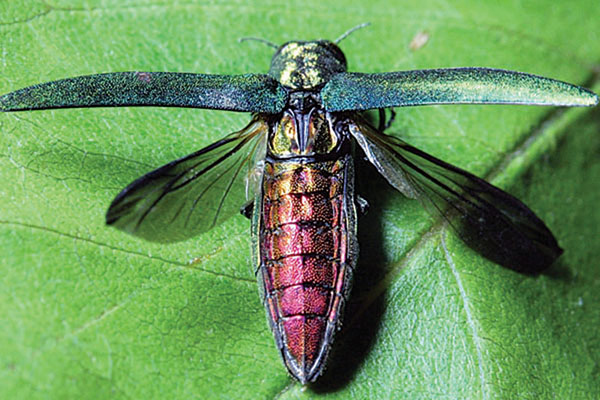
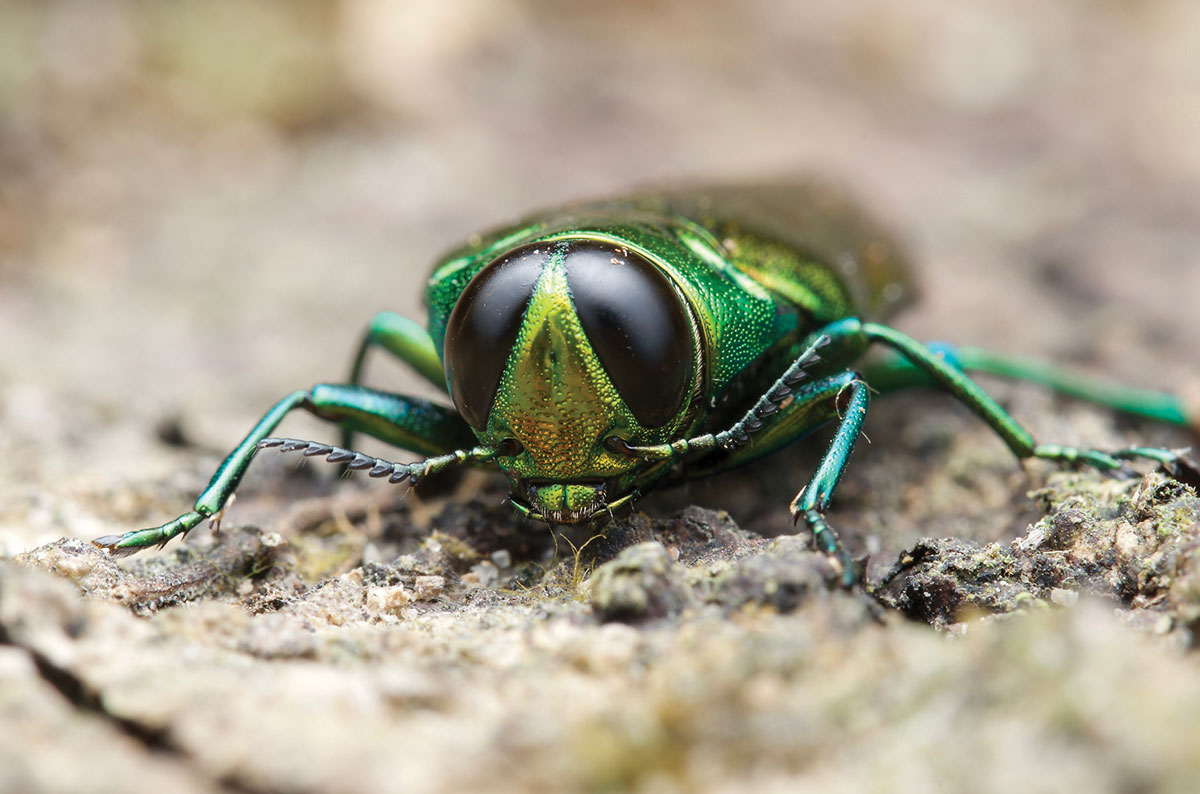
The adult emerald ash borer and larva stage

The EAB has four life stages,including pupa, larva, egg, andadult. An adult, is ½-inch longand ⅛-inch wide, smaller than a penny. Its body is shiny green with a red or purple abdomen. The whitish colored larva has distinctive bell-shaped segments. Adults are commonly found in late May to early September, and more frequently in June and July.
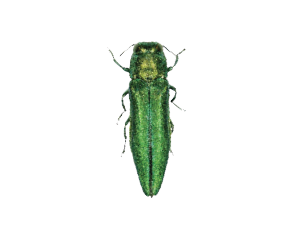
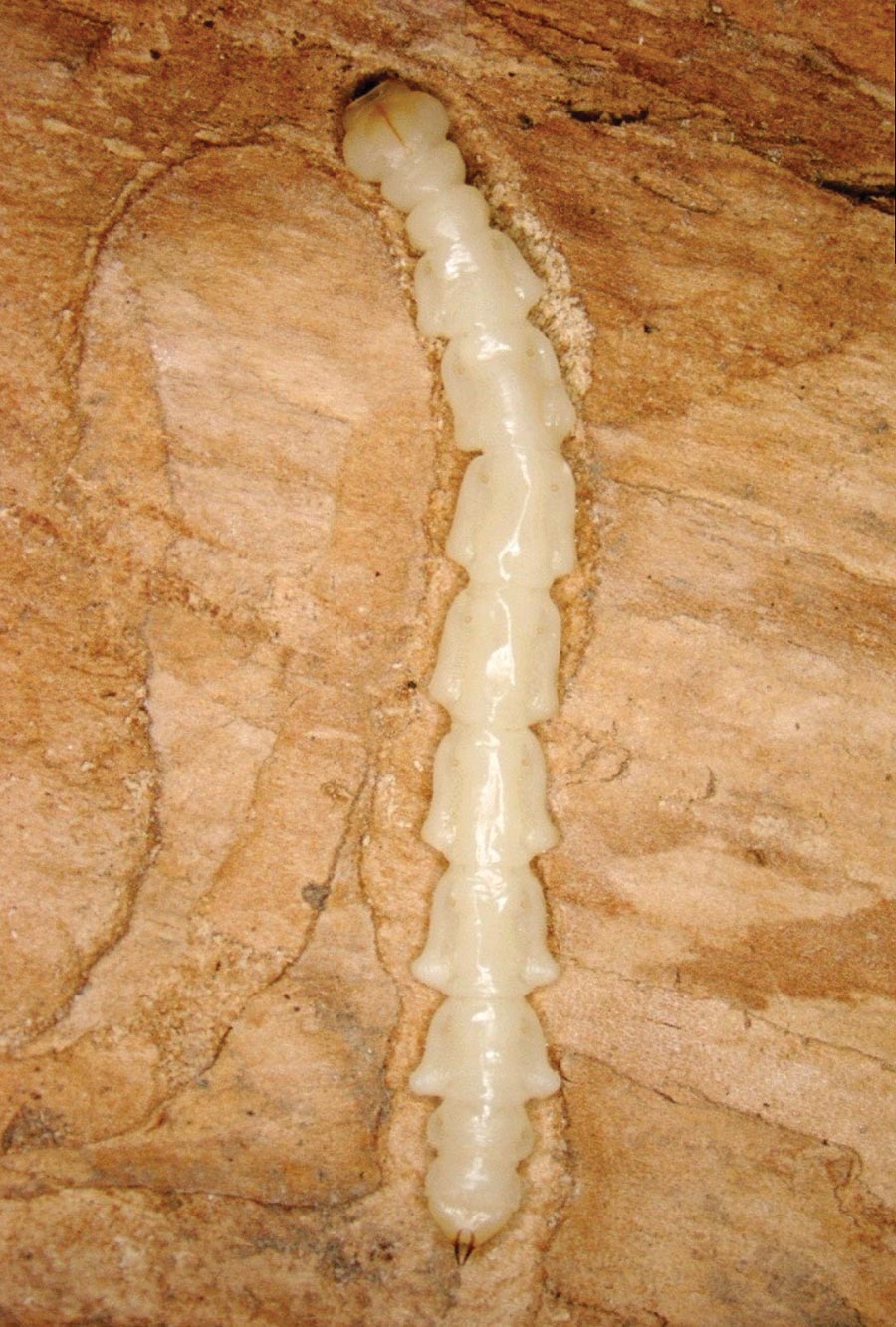
![]()
Currently, there’s no way to stop EAB or save heavily infested trees. And unfortunately, due to financial and manpower restrictions, there’s no way to treat every tree to prevent infestation. “You can only treat a tree ahead of time and target treatments with 10 to 15 miles of a known occurrence. But the challenge is knowing where the known occurrence is,” Drury says. The best way to protect a tree is to treat it prior to infestations — once the EAB is detected, the treatments are less effective. The ATC and other organizations are focusing on saving trees with historical, cultural, and ecological significance. MountainTrue is working with the ATC and Forest Service to save at least 1,000 trees across western North Carolina. One thousand trees may not sound significant, but it will help maintain the genetics of local ash trees when the EAB moves through the area. In 2016, the ATC and Mountain True treated more than 200 trees (over 3,800 diameter inches) along the A.T., using $10,000 from the ATC’s North Carolina License Plate Grant Fund. Treatment involves using systemic pesticides to treat uninfested trees. Using pesticides is never a preferred strategy; fortunately ash trees are wind pollinated, lessening chances of harm to the insect pollinators. To further minimize damage to pollinators, trees with flowering plants near the root collar aren’t treated. The Forest Service is recommending the use of two chemical methods to protect trees. One is a soil injection of Imidacloprid that’s commonly used to protect hemlocks from pests and the other is a stem injection of emamectin benzoate, an insecticide particularly effective against EAB. Fortunately, in addition to the pesticide treatments mentioned previously, there are several biocontrol options that could potentially save ash trees – including several species of parasitic wasps that inject their eggs in the larvae or egg of the EAB. These species have been extensively studied under quarantine, and deemed to effectively control EAB without affecting other native species. This necessary quarantine process is extremely expensive and often takes seven to 10 years to locate suitable biocontrol species.
D-shaped entry holes, and “S” patterns found under the bark
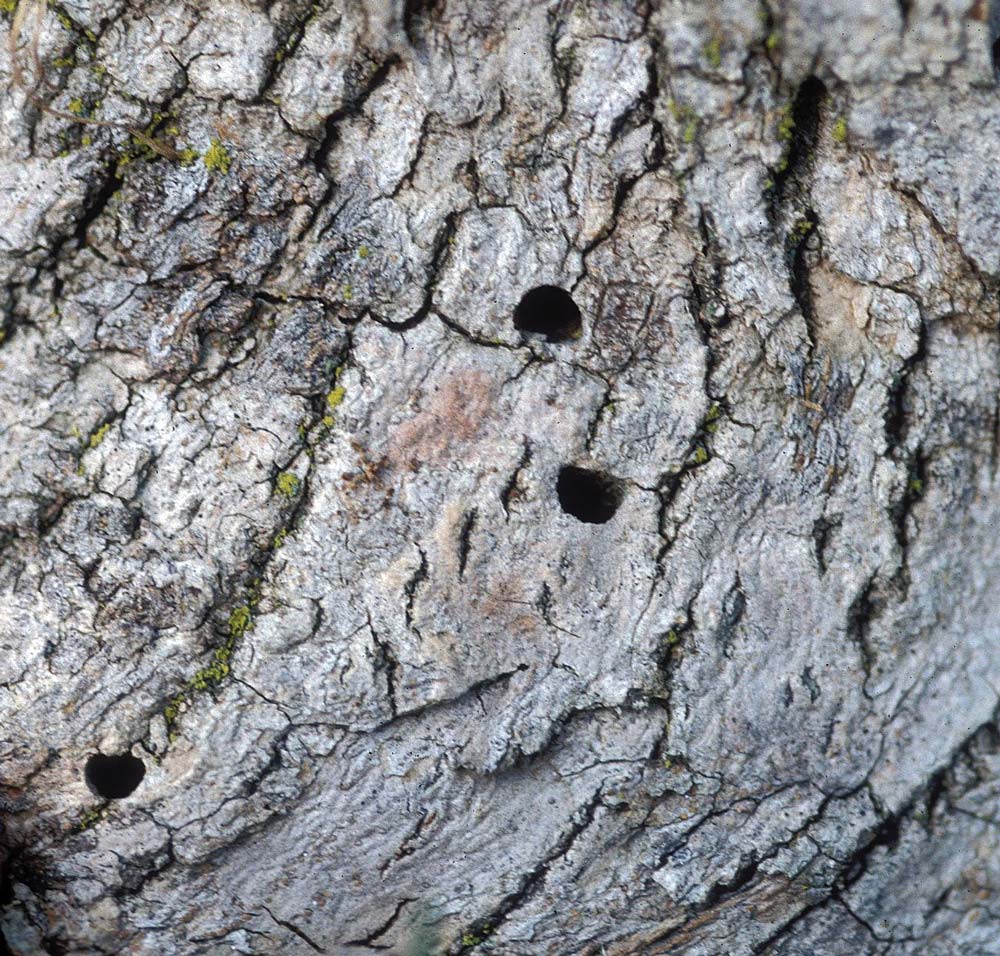
Ash trees branches grow on opposite sides of a limb in the same spot, mirroring each other. They also have compound leaves, meaning one leaf has a bud at its stem base and multiple leaflets. The bark of a young ash tree is smooth, while the bark of an older tree has a rough, diamond pattern.
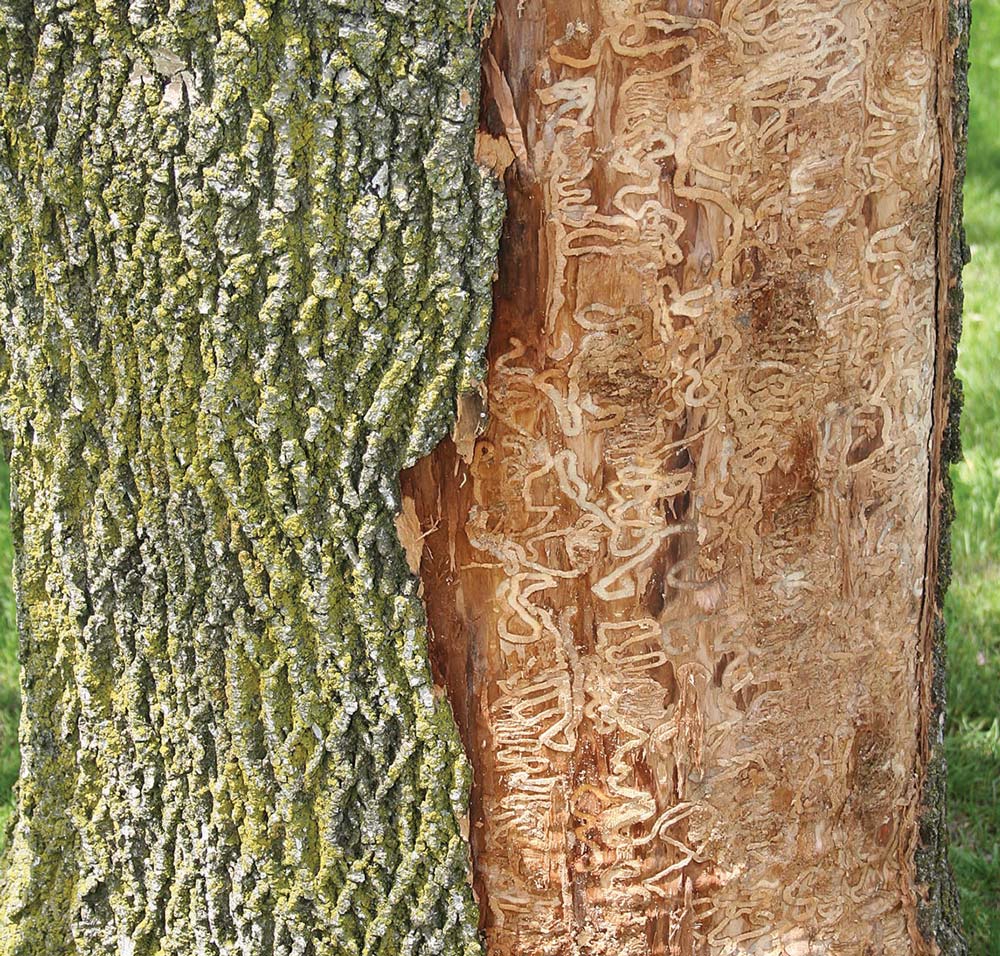
Infestation starts in the live crown portion of the tree, leaving dead branching, D-shaped holes in the bark, S-shaped patterns under the bark (caused by the larva), and blonding, when woodpecker slough bark leaving a buff colored appearance.
The EAB does not kill ash trees across their native range in Asia. This is likely because, in its native range, EAB plays host to four species of parasitic wasps. To protect U.S. ash trees, the Forest Service is releasing the Asian wasps on the North Carolina and Tennessee border. The U.S. Department of Agriculture’s Animal and Plant Health Inspection Service is raising the parasitoid wasps, which destroy the EAB by using their ovipositor to inject eggs into EAB’s eggs or larva. The wasps use the EAB’s eggs or larva as a host to rear their own offspring. “The idea is that it won’t save the tree you release the organisms on, but it will increase populations to insert a new biocontrol organism into the ecosystem to moderate the EAB population so that ash trees survive,” Merten says.
All of these efforts require significant manpower and financial investment. The ATC and MountainTrue are working with volunteers to survey and document infested trees and then determine which areas to invest in protection. And saving a tree isn’t cheap, on average, it costs $100 to protect a single tree for up to for five years. “It will require significant investment to save even 1,000 trees,” Kelly says. “Just looking at the fundraising environment, we’re not sure we can save enough. Some public and private investment to save these trees will be needed.”
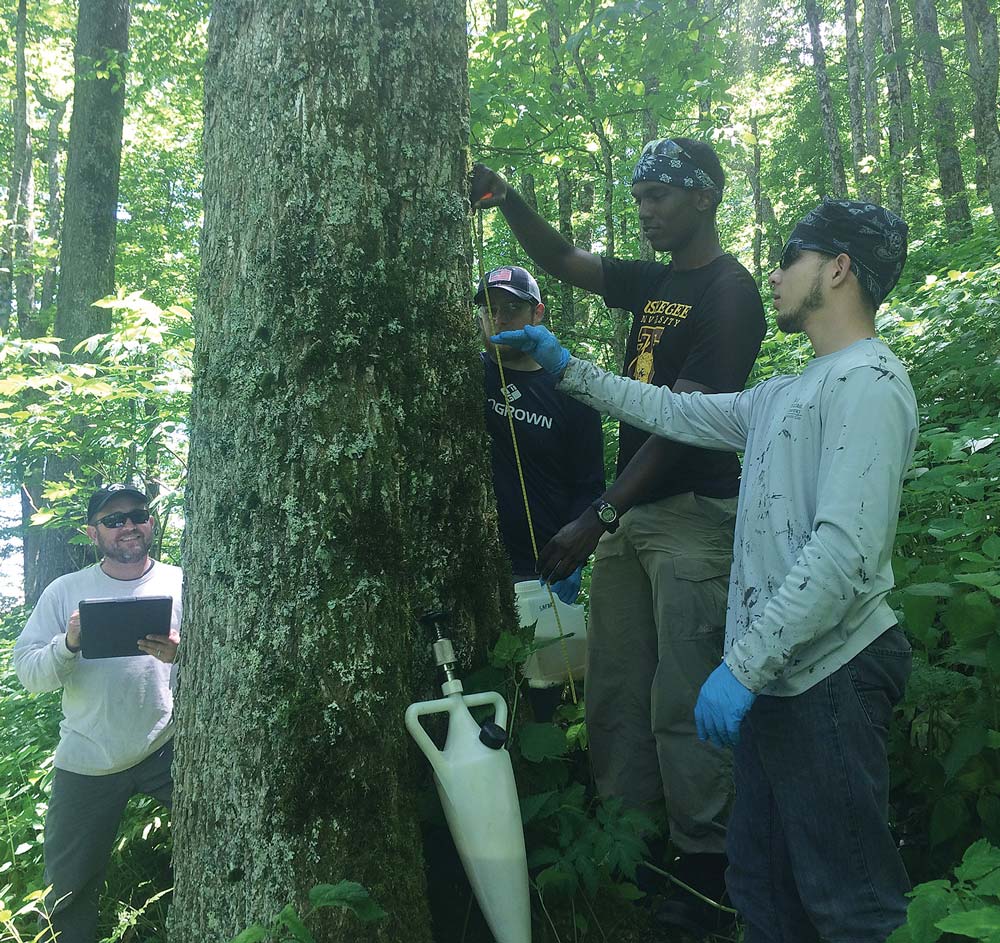
(from left) Matt Drury from ATC takes data as Ethan Brickwood, Khidhar McKenzie, and Joe Cordova from ATC’s Conservation Leadership Corps measure and prepare to treat an ash tree against EAB on Bluff Mountain in Tennessee

“Super volunteer,” Dan Firth from Tennessee Eastman Hiking and Canoeing Club is measuring ash density for treatment near Spivey Gap, North Carolina
Though donating is an important component in saving the trees, there are non-financial ways Appalachian Trail supporters can work to protect ash trees as well. Most importantly, never move firewood. If you must bring firewood to a campsite, make sure it’s kiln dried. The ATC, MountainTrue, and other regional environmental groups also are looking for volunteers to help identify and inventory areas of living and dead ash trees, as well as treat infested trees. Contact your local A.T. club, ATC regional office, or MountainTrue for information on volunteering.
![]()
Destruction of the ash trees presents another problem: safety. “The trees are prone to mid-stem failure. Within two years of dying, they often snap like a matchstick,” Drury says. To avoid a potentially dangerous situation, it’s important to be aware of your surroundings and never set up camp underneath a dead tree. “Familiarize yourself with what you should be looking for when you set up camp. Don’t just trust that if there’s a campsite, it’s suitable for camping,” Orlousky says. “The ATC is doing its best to inventory, document, and remove hazard trees.” But with the rate of destruction. It’s impossible to report or take down every dead tree.
Though the future of the forest composition as we know it may be impossible to fully conserve, many environmental, governmental, and conservation organizations are working together to preserve as many ash trees as is plausible. With their combined efforts, ash tree genetics may be preserved to regenerate the forest for generations to come.
For more information about ash tree protection visit: appalachiantrail.org/emeraldashborer
Jessica Porter is a freelance writer and editor who thru-hiked the AT in 2014. For more information visit: www.JessicaLynnePorter.com